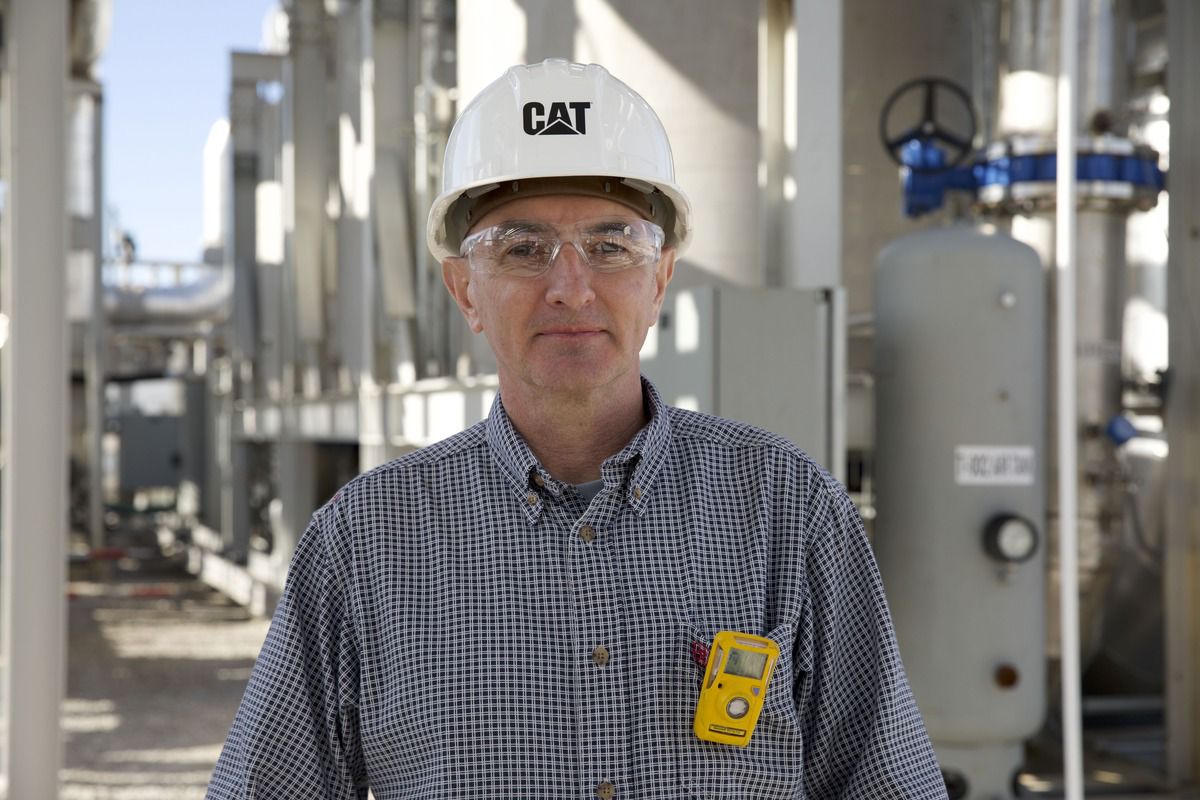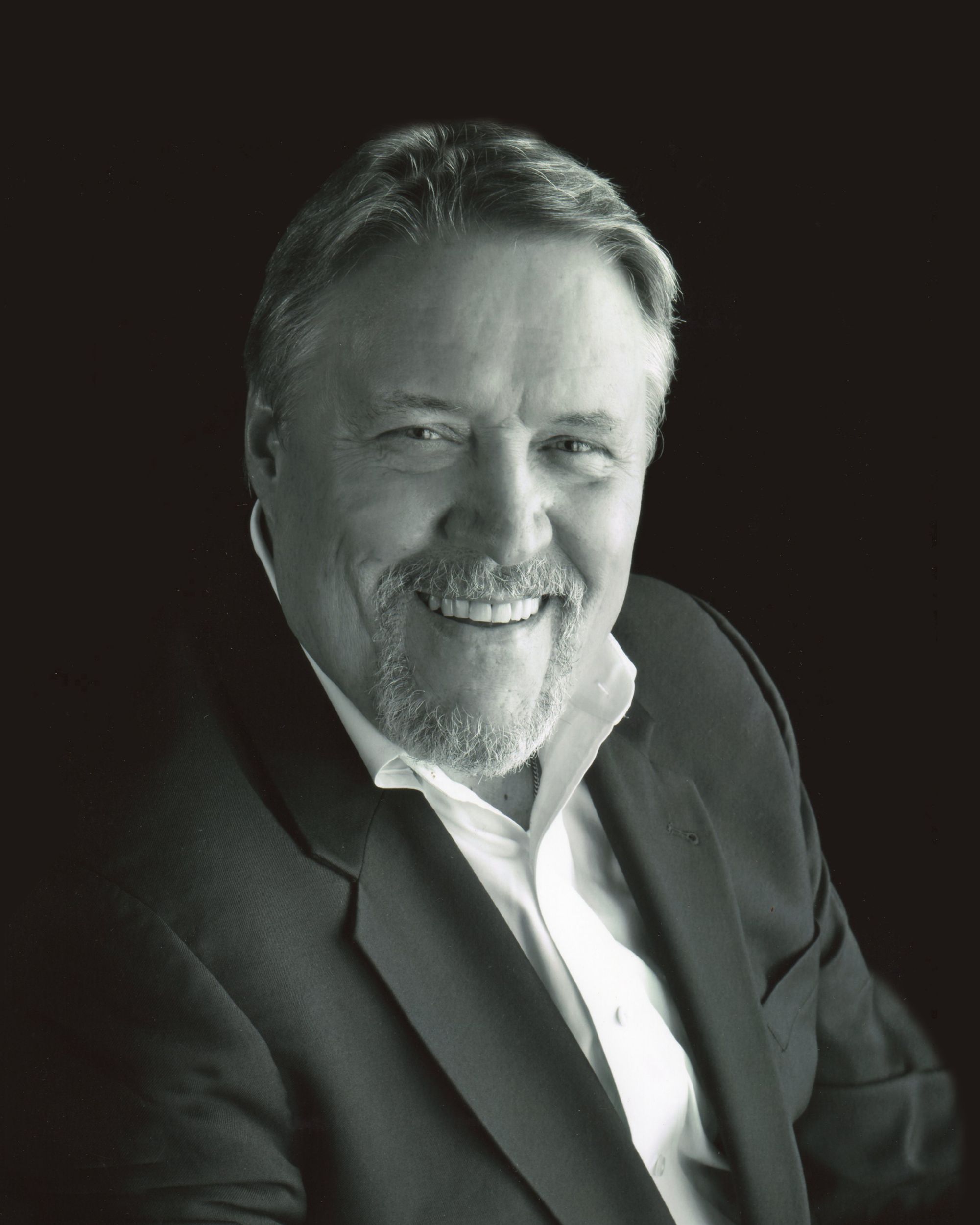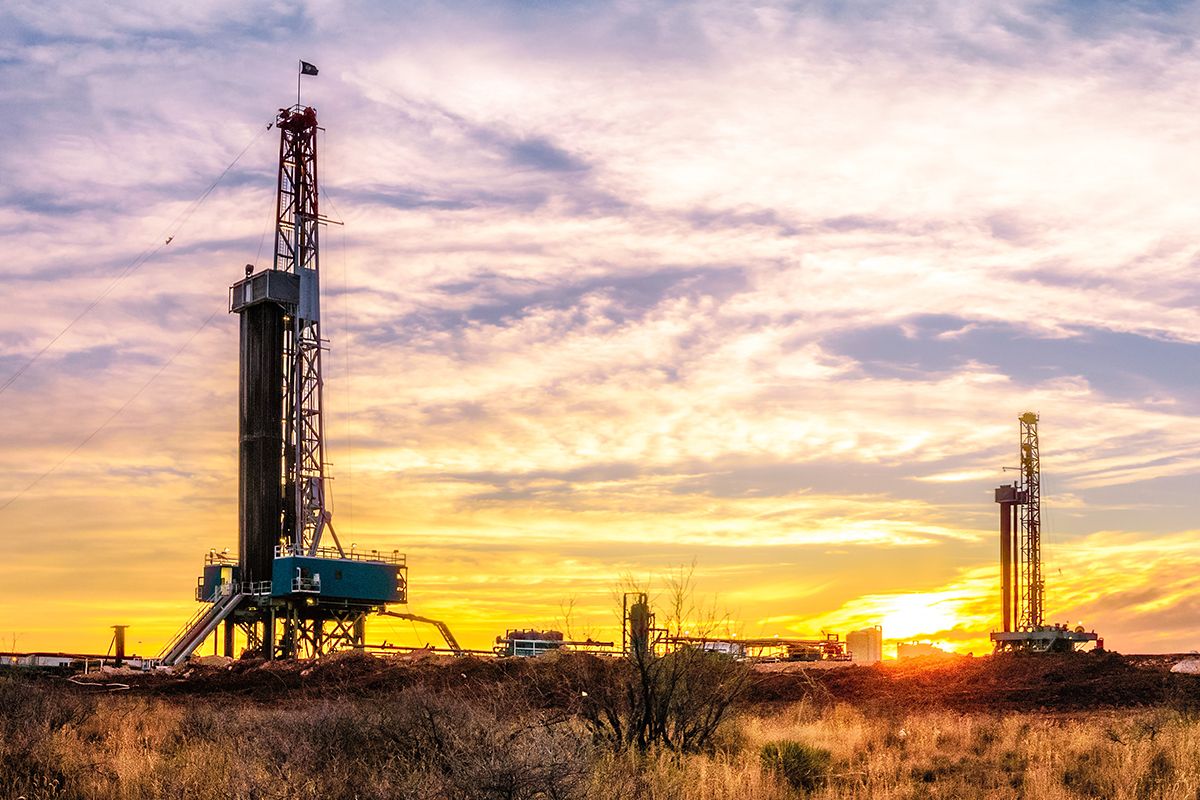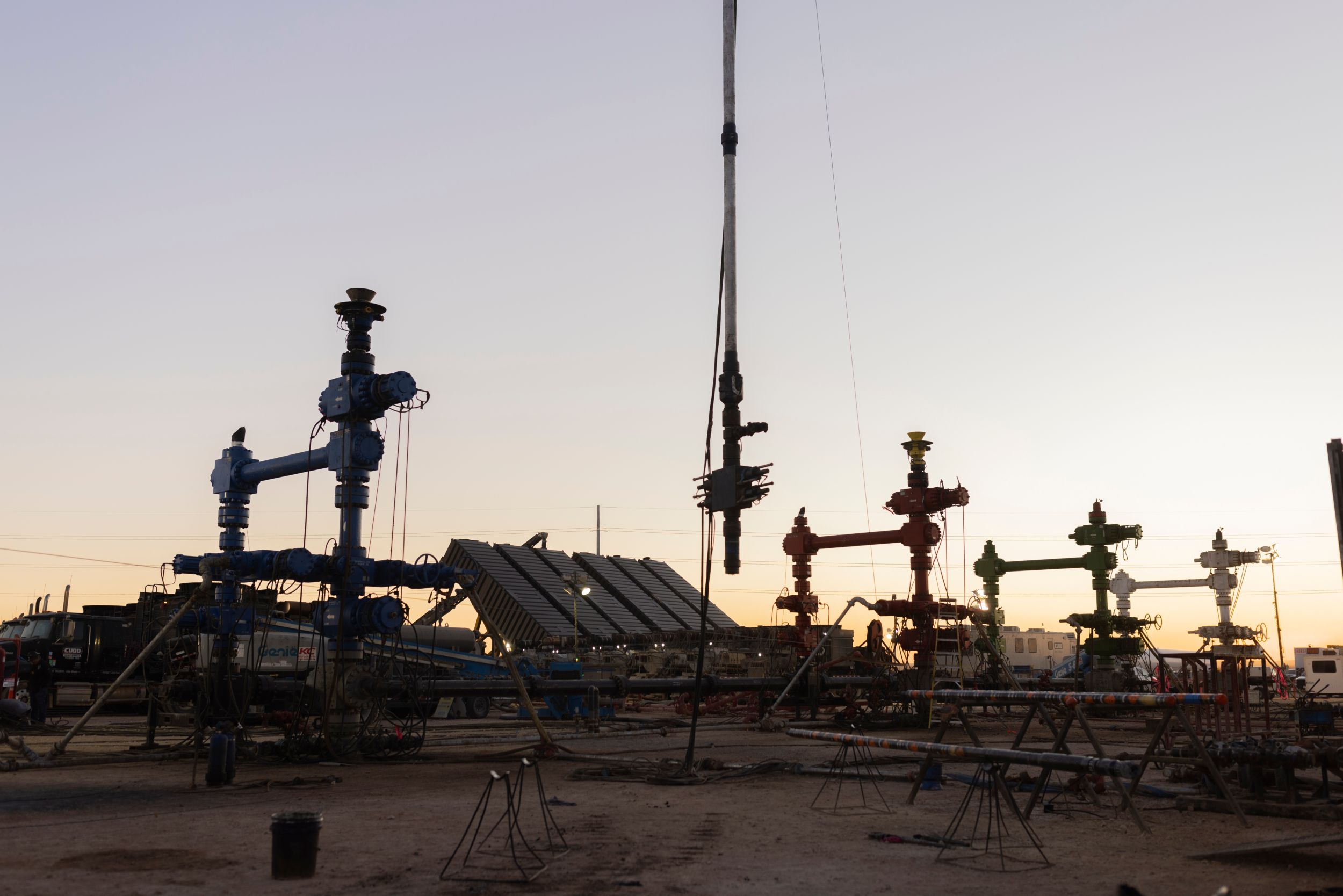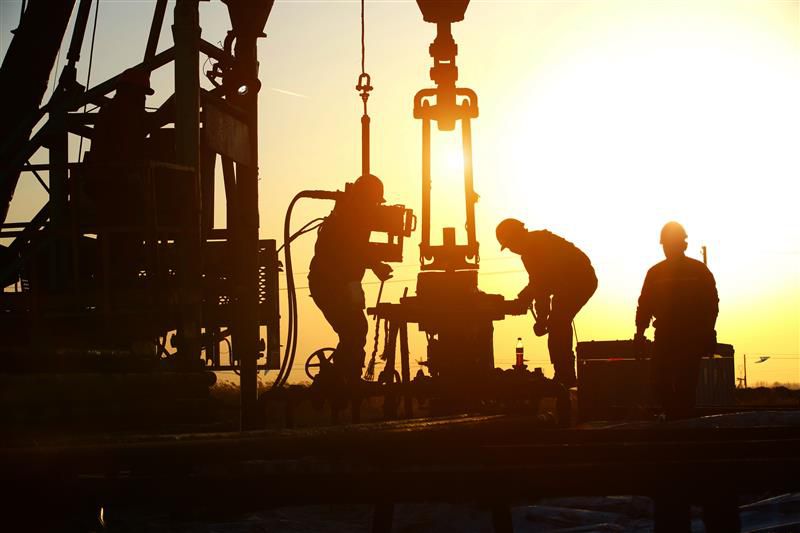00:00:00 Speaker 1
This episode of the Energy Pipeline is sponsored by Caterpillar Oil and Gas. Since the 1930s, Caterpillar has manufactured engines for drilling, production, well service and gas compression. With more than 2100 dealer locations worldwide, Caterpillar offers customers a dedicated support team to assist with their premier power solutions.
00:00:28 Speaker 2
Welcome to the Energy Pipeline Podcast with your host, KC Yost. Tune in each week to learn more about industry issues, tools, and resources to streamline and modernize the future of the industry. Whether you work in oil and gas or bring a unique perspective, this podcast is your knowledge transfer hub. Welcome to the Energy Pipeline.
00:00:52 KC Yost
Hello everyone and welcome to this episode of the Energy Pipeline Podcast. Today we'll be discussing carbon capture with our guest, Stephen Percy, strategy manager and business development manager for low carbon solutions at Caterpillar Oil and Gas. Welcome to the Energy Pipeline Podcast, Stephen.
00:01:12 Stephen Percy
Thanks, KC. It's a pleasure to be here.
00:01:14 KC Yost
Great to have you here. I'm looking forward to this topic. So before we start talking about carbon capture, I can tell from your accent you're not from Texas. So give us a little bit of your background and tell us how you ended up in the low carbon solutions Group at Cat.
00:01:32 Stephen Percy
Yeah. Sure, KC. So originally I'm from Northern Ireland, born there, raised there. Went to university at Brunel University in London, studied electrical engineering, and then went back to Northern Ireland. Got hired by a local company, FG Wilson, who manufactured gensets. Worked there for a while as an engineer, moved into sales, and then I had an opportunity to move overseas to one of their offices in the Middle East. So worked there as a sales manager for several years. Then went to Southeast Asia, Singapore, and then eventually the company was acquired by Caterpillar. I came to the US on a temporary assignment to work with the Caterpillar dealers to do some training, and that turned into a permanent job. So then spent a few years in Caterpillar's electric power division in California and then Illinois. Then moved into the oil and gas division about 15 years ago. Went back to the Middle East for the second time in my career as oil and gas sales manager for Africa and Middle East. Spent about four years over there and then moved to Houston. So I've been in Houston since then. A number of different roles, mostly business development, strategy, then eventually M&A, which is where I got involved with carbon capture. And then we ended up acquiring a carbon capture technology company several years ago. I moved into a new role helping to build out that organization and now my focus is business development for our low carbon solutions group.
00:03:09 KC Yost
Outstanding. Outstanding. So how many years have you been in Houston now?
00:03:16 Stephen Percy
I believe it's 13 years since we moved here.
00:03:20 KC Yost
You're a native. You're a native.
00:03:21 Stephen Percy
Almost. Yes.
00:03:26 KC Yost
Welcome to Houston, and you are a well-traveled man. That's quite a background that you have. So let's talk a little bit about the low carbon solutions group at Cat. Can you give us an elevator speech on that?
00:03:47 Stephen Percy
Yeah. Certainly. So yeah. We created that group just over three years ago. So we acquired a small startup company that had some very innovative carbon capture technology. We'd invested through our venture capital arm, saw the progress that they had been making. It was a very good strategic fit for us. So we completed that acquisition and then we created a new team to build around that. The founder of the company became our chief engineer. We added some additional process engineers, business development and others to that group. And then since then, we've continued to invest in that technology, build pilots and deploy those at customer sites. So it's been very fast-moving, a lot of exciting progress over the last couple of years. And that group sits within Caterpillar Oil and Gas, and we provide solutions and technology, not just for oil and gas applications, but that's primarily where our focus is today, because what we see. The opportunities there moving pretty fast relative to other segments.
00:04:54 KC Yost
Well, yes, you just look at the environment today in the oil and gas industry and what it's headed toward. And carbon capture is a buzz phrase that's used regularly, isn't it? Yeah.
00:05:07 Stephen Percy
It is for sure.
00:05:09 KC Yost
Good. It sounds like you guys got in on the ground floor and are working hard on that technology, so very exciting. So before we start talking about carbon capture, this acronym, CCUS keeps popping up. What does CCUS stand for, if you don't mind me asking right off the bat?
00:05:28 Stephen Percy
No. That's a good place to start. So CCUS, the CC is carbon capture and the carbon in the form of carbon dioxide, CO₂. And that really starts with separation. So separating CO₂ from another gas where the CO₂ is a by product or something that has to be removed from that process gas stream. And that's been done for several decades. That in itself is not something that's new but carbon capture takes it a step further from separation. So when CO₂ was separated from natural gas and natural gas processing. It was typically just vented to atmosphere. And obviously today with climate concerns, we want to avoid doing that where possible. So rather than venting it after separation, we now contain the CO₂ and then we put it somewhere else. And the U the S in CCUS, the U is utilization, so you're actually using the CO₂ for some other purpose. So that could be EOR, enhanced oil recovery. And again, that's something that's been done for several decades already. So it's injected into a conventional oil formation to produce incremental oil that wouldn't be produced otherwise, or it could be turned into a new product, maybe it's used for a food and beverage application, or you can even combine it with hydrogen and turn it back into a low carbon fuel that can be utilized. And then the S is storage or sequestration. And in that scenario, you're really just locking up the CO₂ in a way that it doesn't enter the atmosphere. And usually that takes the form of injecting the CO₂ into an underground rock formation, secure storage, where it's not going to migrate back up to the atmosphere. So it'll stay underground in the same way that the natural gas has been underground for millions of years already and stays there due to the nature of the geology.
00:07:36 KC Yost
So back in the early'90s I worked on what we called a tertiary recovery system at the Salt Creek Field out near Snyder, Texas. West Texas. At the time, it was a mobile facility. And we got CO₂ from probably one of the only CO₂ pipelines in West Texas at the time. And pressured it up, liquefied it, put it into a distribution system, and then pumped it into the wells for the tertiary recovery system, if you will or the removal of oil from seams in that field. So back in the early'90s, you said it's been around for several decades. So would that count as a U and an S? Because at the end of the day, the objective was to leave that CO₂ in the ground, so it was utilization and sequestration at the same time, right?
00:08:39 Stephen Percy
Yeah. That's exactly right. So enhanced oil recovery is a little bit unique in that it's a utilization pathway. We're using the CO₂ for another purpose to produce more oil, but in the process, the CO₂ does permanently stay in the rock formation so it ends up being permanently sequestered as well. So it is actually utilization and sequestration at the same time.
00:09:03 KC Yost
Back in that time, it was replacing water injection for oil recovery, finding the molecules were much smaller in the CO₂ than in the water and able to extract more oil from the field than what the water was doing. It was very exciting technology 35 years ago. It's old hat now, I suspect, right?
00:09:29 Stephen Percy
Yeah. Yes. Yeah. It's pretty mature now. It's well understood. And yeah, we're seeing it now expanding. Mostly it's been in the US but now we're seeing it in the Middle East and some other areas as well.
00:09:43 KC Yost
So we talked before we started recording about how carbon capture is a buzz phrase that's used regularly in the industry now. We talk about that all the time. So can you explain how oil and gas operators are interested in solutions for carbon capture in the CCUS you described and why Caterpillar is involved in that process?
00:10:10 Stephen Percy
Yes. Yes. So midstream operators for those kinds of operators, their engines and gas turbines that they run at their production sites can quite often be their largest scope of direct emissions or scope one emissions. Those assets, they've run them for years. So the cab engines that are used for gas compression will run for 30 years or more. So it's a significant investment for those customers. And as a large source of CO₂ emissions, it's something that they can look at adding carbon capture to that to help them mitigate that and significantly reduce their carbon footprint. So as a key supplier of equipment for those upstream and midstream operators, we saw an opportunity there for us to make a meaningful contribution to help them reduce their carbon footprint at those site. And we've invested in a technology that's particularly suitable for post-combustion capture from those engines and from solar turbines, which is a Caterpillar subsidiary. We sell that as a way to help them leverage those long-term investments. So rather than replacing their combustion engines or turbines with electric motors or some other low-carbon solution, we wanted to help them be able to continue to operate those assets for the remainder of their life but at the same time helping them achieve their carbon reduction goals. And we're looking to help them reduce their CO₂ emissions by 95% or better.
00:12:02 KC Yost
So the solutions that you're developing are not only for recip, but they're for turbines as well. You see Cat drivers out of compressor stations on a regular basis. Natural gas pipelining is what I've been doing for 50 years or whatever. But because solar is part of the Cat family, you've found an application for the turbines as well. Am I understanding that correctly?
00:12:34 Stephen Percy
Yeah. That's correct, KC. So we work very closely with our colleagues at Solar Turbines to make sure that the solutions that we're developing can be applied, not just for the recip Cat gas engines that are used in gas compression, but also for those Solar Turbines projects. And as you know, they're widely used in the oil and gas industry on pipelines, but also for power generation at a lot of sites. Especially in SAG D or oil sands operations where steam is widely used. So Solar Turbines products are used in a lot of those. Not just for generating power, but also using the heat for steam generation.
00:13:22 KC Yost
Okay. Good. Good. So now there are a number of carbon capture technologies that are out there. What factors do your customers consider when evaluating different carbon capture technologies?
00:13:44 Stephen Percy
Yeah. So I'd say the first one ... And this is not necessarily related to the technology choice, but it's going to have a major impact on project viability. And that's the plan for storing or utilizing the CO₂ after it's been captured. So that's really the first thing to understand. What's our plan for that? Moving CO₂ can be expensive. So ideally you want to be able to capture or utilize it as close to the capture site as possible. So if you have suitable geology for a sequestration well and access to pore space, then that would be ideal or access to a pipeline that can move the CO₂ at relatively low cost to somewhere else. And there's a network of about 5, 000 miles of CO₂ pipelines in the USA today that are used for primarily for enhanced oil recovery.
00:14:42 KC Yost
And that is growing exponentially, isn't it?
00:14:45 Stephen Percy
Yes. Yes. It is indeed. And alternatively, you may have utilization pathways that could be available locally. Maybe a manufacturing process that uses CO₂ as an input. So that's really the first question. What do we do without CO₂ after capture? And then probably the next one-
00:15:03 KC Yost
So it doesn't do you any good to capture it if you have nowhere to put it.
00:15:08 Stephen Percy
Yeah. Yeah. That's really the number one rule of carbon capture. You have to have a plan for what you're doing with it after it's been captured.
00:15:15 KC Yost
Sorry. Simple. Simple question. Yeah. Go ahead.
00:15:18 Stephen Percy
Yeah. And then next it's what's the scale? How much CO₂ are we capturing? So different technologies work well at different scales. Some technologies may work very well at large-scale systems, but might not be suitable at a smaller site. So that's probably the second one. And then next I think you would need to look at the kind of gas specification that you're working with. What's the process gas that the CO₂ needs to be captured from? And things like temperature, pressure and CO₂ concentration are all factors. So just looking at the concentration, for example, capturing CO₂ from a low concentration post combustion exhaust gas turbine, it's maybe 3% CO₂ in the exhaust or 6% in a lean-burn engine. So that's going to require very different treatment than a high CO₂ source such as that coming from a cement or a hydrogen plant. So the technology may look very different depending on what that gas process stream looks like.
00:16:33 KC Yost
I see. I see.
00:16:35 Stephen Percy
Yeah. And then you've got to look at the overall site integration with the equipment that it's already there, including what you're capturing the CO₂ from. So how much energy do you have available? Do we have enough power available on site to run the equipment? So the carbon capture process itself is going to need some additional energy. So you need to compress the CO₂ after it's been separated, whether it's going into an EOR well or a sequestration well that happens at a relatively high price here. So you will need some additional energy or power to run that equipment and the other parts of the CO₂ capture system. And careful site-specific design, especially heat integration is pretty important as that can minimize that energy requirement and lower your overall OpEx of the system. And if it's a brownfield site where the original equipment already exists, then you need to look at the footprint that's available there and figure out where the capture equipment can be sited. How it connects to that equipment. So that overall integration is a very important factor when it comes to choosing the technology and the system that will work best.
00:17:59 KC Yost
So what makes Cat's technology different from other alternatives?
00:18:09 Stephen Percy
So Caterpillar's technology is based on physical absorption using molecular sieves. And again, those have been around for a long time. They're widely used for different purposes. Especially within the gas processing industry. And we use a variation of that called thermal swing absorption where we capture CO₂ from a coal gas and then we apply heat to regenerate it and release a pure stream of CO₂. So our process is called CO₂ TSA. The CO₂ obviously is carbon dioxide, TSA is thermal swing absorption. So that's a proprietary version of TSA that can capture an excess of 95% of the CO₂ stream coming out of the engine. And it uses equipment that has relatively low CapEx, so the installed cost and then the running cost, the OpEx is very low, especially when it's applied to those low post-combustion sources.
00:19:16 KC Yost
Is this basically just a bolt-on system? Can you just bolt it onto the exhaust of the Cat driver or the Solar Turbine?
00:19:27 Stephen Percy
Yeah. More or less. For the lean-burn engines we take the exhaust straight out of the engine and into our capture system. We don't need any modifications to the engines at all. On the gas turbines with a very low CO₂ concentration we actually have another technology that we apply first that's called our semi-closed cycle, and that increases the CO₂ concentration and reduces the mass flow of the exhaust before it goes to the capture system. And then it goes into the same CO₂ TSA capture system that we use on our gas engines. But yeah, for engines it's bolt on.
00:20:06 KC Yost
Yeah. So because you guys have the compressor drivers and recips and you have the turbines, you have analyzed this and know exactly what needs to be done for each, which is quite a differentiator, I would think to most carbon capture systems that are out there.
00:20:29 Stephen Percy
Yes. I think that's true as the designer of not just the engine or the turbine, but also the carbon capture system. That does give us some advantages when it comes to integration of the system. Making sure that the capture system doesn't have any effect on the performance or the durability of the engine or the turbine. And also being able to get the best overall heat integration of the system, which is really what drives our very low CapEx of the system. I think a key differentiator for us is the way we regenerate the CO₂ from the system. And in thermal swing absorption, you have to first of all take heat out of the exhaust. It's coming out of the engine hot. We have to reduce that temperature for the capture process to work, but when we remove that heat, we actually add it back in later in the process. We use recirculated CO₂, which is one of the novel parts of our process.
00:21:37 KC Yost
Interesting.
00:21:38 Stephen Percy
And we add hot CO₂ back into the capture vessel to release that pure stream of CO₂. And using CO₂ as the heat transfer medium means that we're not diluting our product stream with something else that helps us keep our CO₂ purity very high, while also repurposing that waste heat that otherwise would've gone out the tailpipe and just being lost to atmosphere.
00:22:04 KC Yost
Sure. Cool.
00:22:04 Stephen Percy
So that's one of the key things that drives our low OpEx. And then also maintenance in general is very low with the system. We have some fans and blowers and valves that need periodic maintenance, but otherwise it's a low-maintenance system. And unlike traditional solvent systems where you may be losing some of that solvent, the tailpipe of the process, or it can be consumed by the process or you continually adding new solvent, the solid solvent that we use is very stable. It's environmentally benign. It's got a very long service life. So again, that drives very low CapEx in the system. And it's also very scalable. So we can use it, whether it's power generation or a gas compression application on a single engine. Multiple engines connected to the same system or several gas turbines at a site. We can scale it up and down as required. The components are either commercially available. Things like the valves, the mold-save media itself or the components can be easily manufactured. So we use low-pressure vessels that can be built at a fab shop. So our existing partners in the gas compression and gas process industry are very capable of building that kind of equipment. It's very similar to the kinds of things that they already build today.
00:23:42 KC Yost
So with the scalability, do you basically have a stream system that is one size and depending on the output, you put two or three of these in parallel in order to handle the gas stream, or do you have one stream system and you just increase the size of your equipment to handle increased flow? Am I asking that question right?
00:24:17 Stephen Percy
Yes.
00:24:17 KC Yost
The old gas measurement philosophy was... Especially back when we were using Daniel senior meter plates build one tube and then if the flow rate increases, you'd add a second tube and a third tube to increase the volume as compared to just building one big tube and dropping in an orifice plate that has a very small annulus. So how do you guys handle that scalability?
00:24:48 Stephen Percy
Yeah. That's a great question. And it's actually a little bit of both the things that you mentioned. So we can increase the size of the vessels. So the process uses three vessels in a single train. One's capturing CO₂, one is having CO₂ regenerated to release the products, and then the third one is in a cool down phase. And if we want to increase the capacity, the number of tons of CO₂ per day that can be captured... If we've got bigger engines or we've added more engines, then we can increase the size of those vessels, either the diameter or the height. So we scale up. At some point you get to a natural break point where we could make it larger, but it's not practical when it comes to shipping the equipment to site. And at that point, then we go to a multi-train type design where we can put systems in parallel. So we can probably scale these up to 250 tons per day in a single train. And then if we have larger systems, customers got 500 tons per day at a single site, we put two of those trains in parallel. So you can simply keep scaling up as required once you get to that maximum practical size in a single train.
00:26:18 KC Yost
Gotcha. You talked about transportation. I suspect the available footprint, you mentioned that earlier, is also a key to what you can and can't do.
00:26:29 Stephen Percy
Yeah. That's very true. So if it's a greenfield side, we have the ability to work with the customer right from the beginning. We can obviously come up with a very efficient site design. With brownfields you have some constraints there just depending on how much footprint is available. So we might have to make some changes to the layout to make sure that we can fit it in and work around the other equipment that's already at site.
00:26:55 KC Yost
Okay. Super. Super. Well, thanks for drilling down on scalability. I was very, very interested in that. Any other differentiators you want to talk about?
00:27:07 Stephen Percy
I think I covered most of them there, but yeah, really it's a relatively simple process that uses more or less off the shelf for readily available components. It's scalable and it's low cost and really we're very pleased with the pilots that we've deployed and we're continuing to improve the technology and further reduce costs for the customers.
00:27:34 KC Yost
Outstanding. Outstanding. You've been in the industry for a long time. I have too. And there are always headwinds. There are always tailwinds out there. Just sometimes depends on who's in the White House and who isn't, and environmental factors, all sorts of variables out there that keep changing the tides, if you will, headwind, tailwind of the energy industry. So what do you see as headwinds and tailwinds when it comes to CCUS and what does the future look like looking into your crystal ball?
00:28:15 Stephen Percy
Yeah. So I think probably the main headwind that we see at the moment is really availability of sequestration wells and pipelines. And those wells require approval before they can be drilled in those systems built out. And in the US today that approval goes through the EPA. In some states they have primacy and they can be approved locally. And up until now, it's probably taken about three years on average for those permits to be approved. So that's happening a little bit slower than we would like to see and we're going to require a lot more sequestration wells for CCUS to really become widely deployed. So that's probably the thing that's slowing it down a little bit. But we're seeing some progress there as more states get primacy and they can approve wells locally. We think that backlog of permits will start to move faster. So we are seeing some progress there. In Canada we see a lot of progress on that side as well. When it comes to local permitting of wells. And the headwinds, I think generally there's been a lot of support from governments. In the US we have 45Q tax incentives from the IRS that help to incentivize adoption of CCUS. We're seeing investment tax credits that have now become available in Canada. And then obviously things like carbon pricing that we're seeing in Europe and elsewhere are obviously incentivizing operators to try to find ways to minimize their carbon emissions. And CCUS is one of the ways that we see that happening. So pipelines, as we mentioned, there's a relatively large network, but I think we're going to need to see a lot more of those pipelines. That obviously takes time to get those permitted and approved and to get them built out. But we're seeing a number of those in development. We're seeing sequestration hubs being developed where you have multiple industries coming together and investing in carbon capture, and then connecting those capture hubs to sequestration hubs via pipelines. So there are a number of those that are being developed. US, Canada, and Europe in particular. So I think over time we're going to see those networks of CO₂ assets being built out. And the same way we have very widespread gas distribution networks today that crisscross the country. We're going to see that slowly develop for CO₂ as well. I think there's a lot of opportunity, a lot of focus on it today. A lot of our oil and gas customers in particular are very interested. We've got a number of feed studies that are underway, So we see a lot of interest and a lot of willingness from operators to invest in technology and systems.
00:31:52 KC Yost
Yeah. So basically, one cannot do this on their own. The industry needs to work together to build the infrastructure in order to accommodate all is what I'm hearing. Does that sound like a fair statement?
00:32:12 Stephen Percy
Yeah. Yeah. I think that's absolutely true. Yeah. And it's going to require participation from the oil and gas operators, from industry partners as well as regulatory bodies and governments and we're already seeing those groups come together and a lot of cooperation that is going to help move things forward.
00:32:39 KC Yost
Cool. Cool. Excellent. Excellent. Well, I've enjoyed the conversation, but gosh, we've run out of time again. Stephen, anything else you want to add before we go ahead and sign off?
00:32:54 Stephen Percy
Yeah. KC, it's been a great conversation. I've really enjoyed it as well, so I appreciate the opportunity to come and talk with you today. I just close out by saying that we think that Caterpillar and our technologies can help our customers make a meaningful contribution to solving some of those challenges that they have around emissions reduction and carbon footprint reduction. We're excited about the opportunities ahead and we're excited about continuing the work that we're doing already and working with our customers to help solve some of those challenges.
00:33:36 KC Yost
It was great having you here today. I appreciate you taking the time to visit with us. It's great. So for the listeners to keep up with Cat Oil and Gases carbon capture journey, you need to check out their social channels and stay in touch. What's happening with the website, Stephen?
00:33:59 Stephen Percy
Yes. We're actually in the process of moving our carbon capture material from the old CarbonPoint Solutions website over to our cat. com website. So that should happen first quarter of next year. So look out for some new material on there. And of course, as you mentioned on our social channels, you'll see some new posts coming over the next couple of months, they'll continue to talk about our carbon capture activities.
00:34:31 KC Yost
All right. So keep up with that. And I suppose if anyone needs some information quickly, they can find you on LinkedIn, Stephen.
00:34:39 Stephen Percy
Yes. Absolutely. Look for me on LinkedIn and please reach out, get in contact. We'd love to talk to you.
00:34:46 KC Yost
Okay. That's S-T-E-P-H-E-N, Percy, P-E-R-C-Y on LinkedIn. You heard it there first. He's going to go from 5,000 connections to 12,000 connections here in the next three weeks.
00:35:03 Stephen Percy
Thanks, KC. Appreciate the plug.
00:35:05 KC Yost
Yeah. Absolutely. Absolutely. Thank you again, Stephen. It was a great conversation. Enjoyed it. And thanks to all of you for tuning into this episode of the Energy Pipeline Podcast sponsored by Caterpillar Oil and Gas. If you have any questions, comments, or ideas for podcast topics, feel free to email me at kc.yost@ oggn.com. I also want to thank my producer, Anastacia Willison Duff and everyone at the Oil and Gas Global Network for making this podcast possible. Find out more about other OGGN at oggn. com. This is KC Yost saying goodbye for now. Have a great week and keep that energy flowing through the pipeline.
00:35:46 Speaker 5
Thanks for listening to OGGN, the world's largest and most listened to podcast network for the oil and energy industry. If you like this, show leave us a review and then go to oggn.com to learn about all our other shows. Don't forget to sign up for our weekly newsletter. This show has been a production of the Oil and Gas Global Network.



